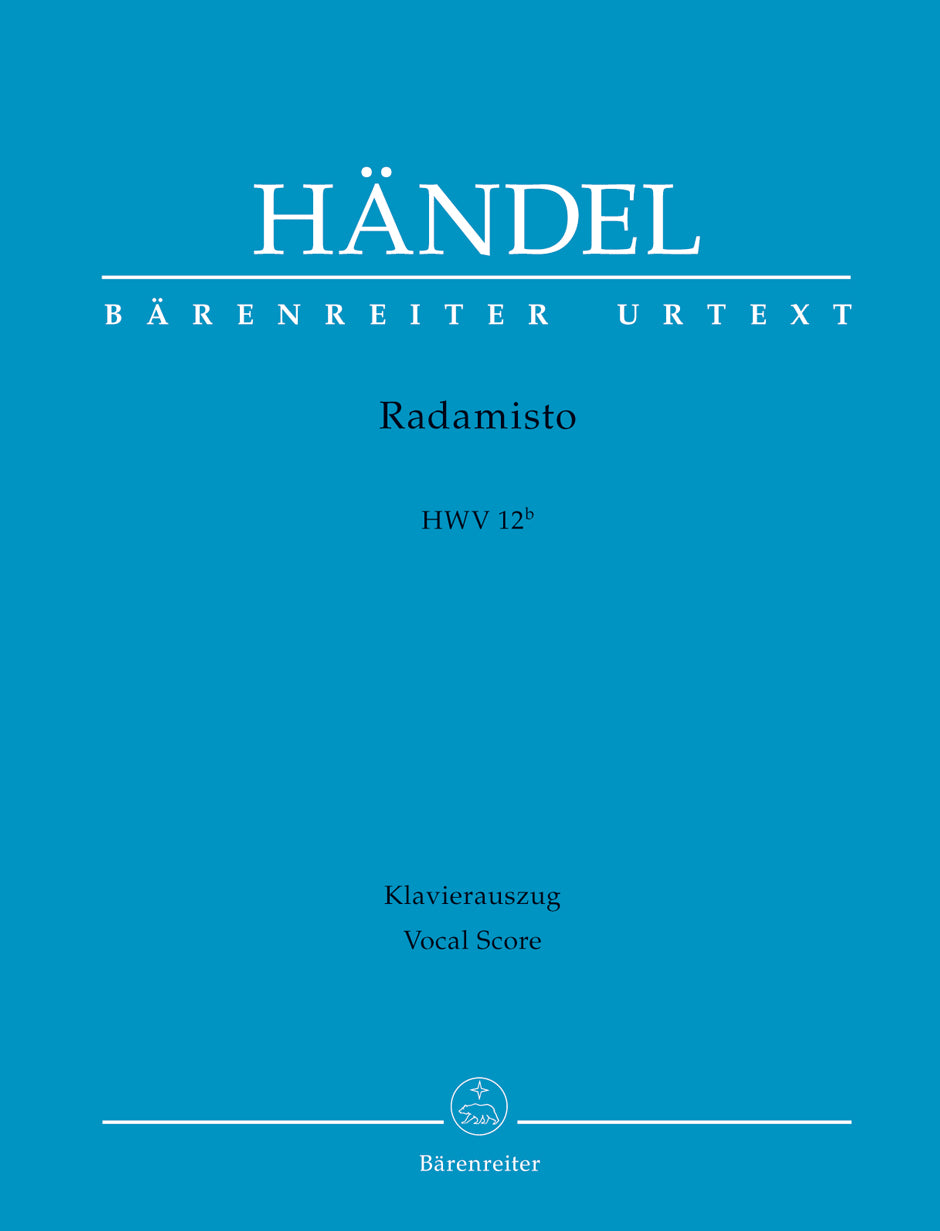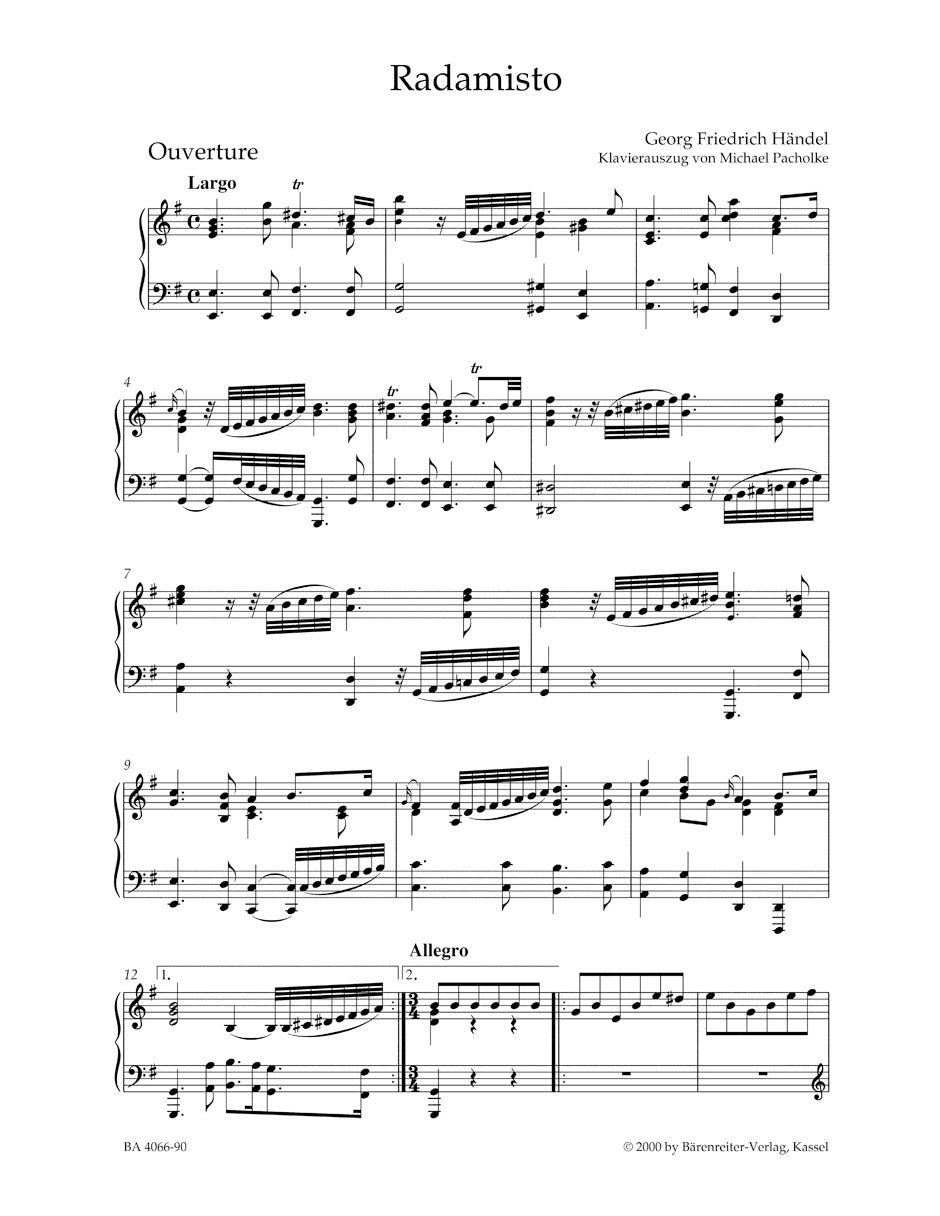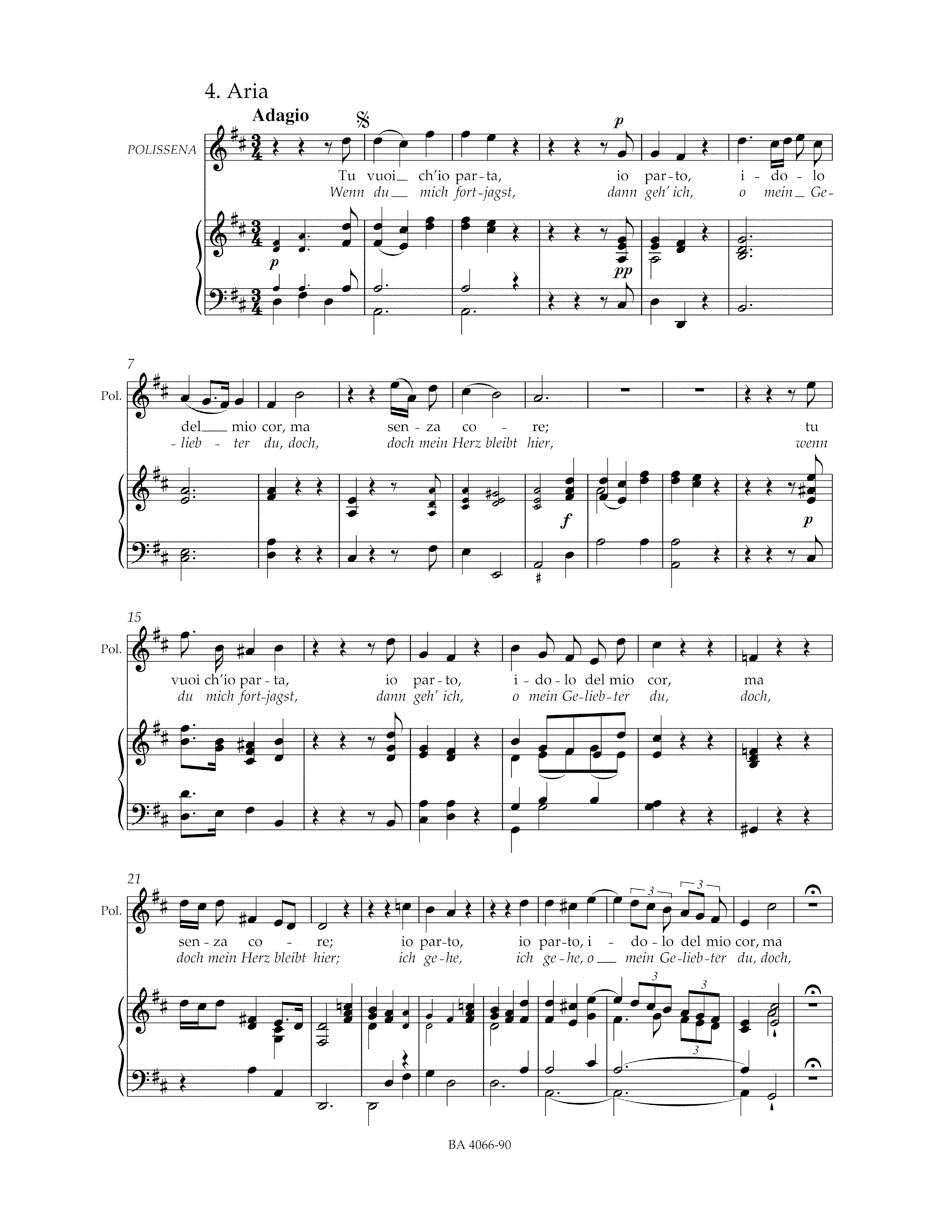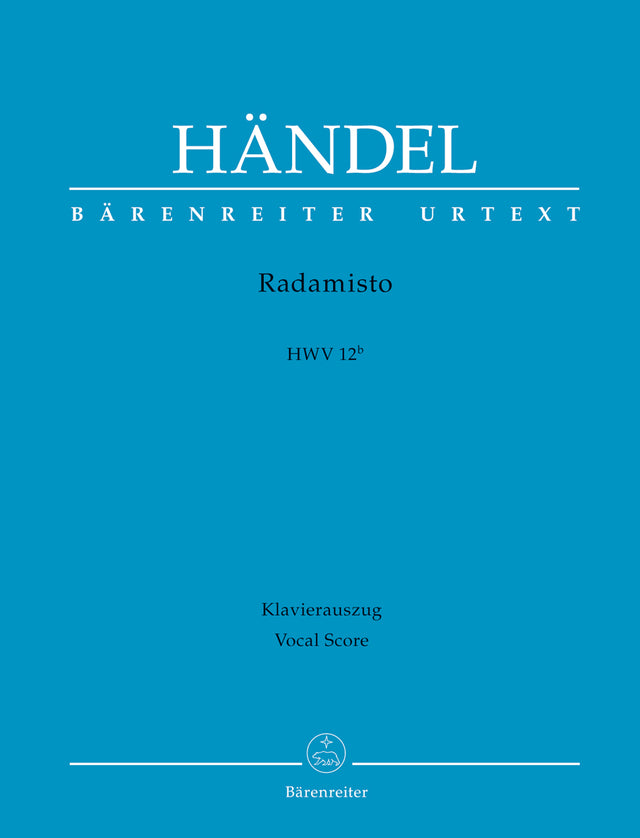Handel: Radamisto, HWV 12b
Expected to ship in about a week.
- Composer: George Frideric Handel (1685-1759)
- Format: Vocal Score
- Instrumentation (this edition): Piano Reduction, Voice
- Originally for: Opera
- Work: Radamisto, HWV 12b
- Work Language: German
- ISMN:
- Size: 7.5 x 10.6 inches
- Pages: 305
- Urtext / Critical Edition
Description
This vocal score is a supplement edition to the score of "Radamisto" (BA 4066) which is part of the "Halle Handel Edition" (Series II - Volume 9.2) edited by Terence Best. It, like the score, presents the music of the second version of the opera which was premiered on 28 December 1720 at the King's Theatre, Haymarket, London as well as the amendments made for November 1721 revival. The appendix includes the amendments for the January/February 1728 version. The first season of the Royal Academy ended on 25 June 1720. The new vocal soloists arrived in London in September. As the first version of "Radamisto" had been a great success during the first season, Handel revised the opera for the oncoming season to accommodate it to his new more proficient cast. The revision was extensive. It included: 1) Changes to the vocal range of Radamisto (soprano to alto for the singer Senesino), Zenobia (alto to soprano for the female singer Durastanti) and Tiridate (tenor to bass for the singer Boschi), 2) compositions of new arias and ensembles, 3) significant changes to the plot consisting of the reduction of Fraartes' role from brother to servant Tiridates and the omission of his not so original love affair to Zenobia. for most of Handel's operas it can be said that the first version is the best version. This is due to the fact that when a work was performed again in later seasons, Handel was often forced to make changes due to casting constraints which often affected the equilibrium and the dramatic context of the work. "Radamisto" is an exception to this rule – the December 1720 adaptation which forms the main part of this vocal score is a much more superior composition than the version performed in April of the same year.
Publishers use a lot of words to describe what they sell, and we know it can be confusing. We've tried to be as clear as possible to make sure you get exactly what you are looking for. Below are descriptions of the terms that we use to describe the various formats that music often comes in.
Choral Score
A score for vocalists that only contains the vocal lines. The instrumental parts are not there for reference. Generally, cheaper than a vocal score and requires multiple copies for purchase.
Facsimile
Reproductions of the original hand-written scores from the composer.
Full Score
For ensemble music, this indicates that the edition contains all parts on a single system (there are not separate parts for each player). In larger ensembles, this is for the conductor.
Hardcover
Hardbound. Generally either linen-covered or half-leather.
Orchestral Parts
Similar to a wind set, this is a collection of parts. In the case of strings, the numbers listed are the number of copies included, though generally these are available individually (often with minimum quantities required).
Paperback
When publishers offer multiple bindings (e.g. hardcover) or study scores, this is the "standard" version. If you're planning to play the music, this is probably what you want.
Performance / Playing Score
A score of the music containing all parts on one system, intended for players to share. There are not separate parts for each player.
Set of Parts
For ensemble music, this indicates that there are separate individual parts for each player.
Solo Part with Piano Reduction
For solo pieces with orchestra, this is a version that contains a piano reduction of the orchestra parts. For piano pieces, two copies are typically needed for performance.
Study Score
A small (think choral size) copy of the complete score meant for studying, and not playing. They make great add-ons when learning concertos and small chamber works.
Vocal Score
A score prepared for vocalists that includes the piano/organ part or a reduction of the instrumental parts.
Wind Set
For orchestral music, this is a collection of wind and percussion parts. The specific quantities of each instrument are notated.
With Audio
In addition to the printed music, the edition contains recordings of the pieces. This may be an included CD, or access to files on the internet.
With / Without Fingering (Markings)
Some publishers prepare two copies - a pure Urtext edition that includes no fingering (or bowing) suggestions and a lightly edited version that includes a minimal number of editorial markings.





